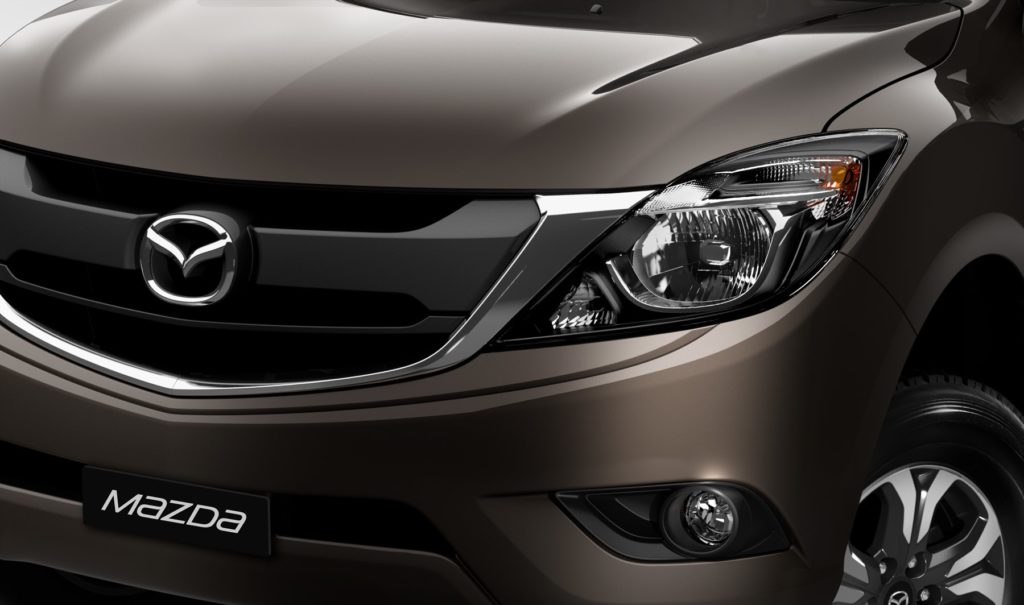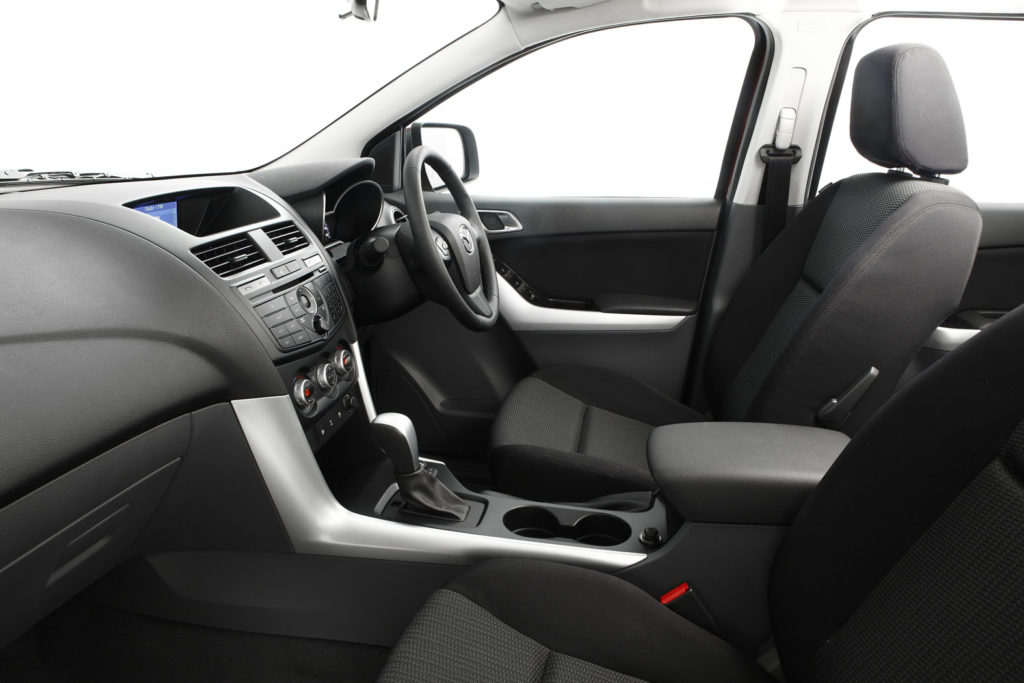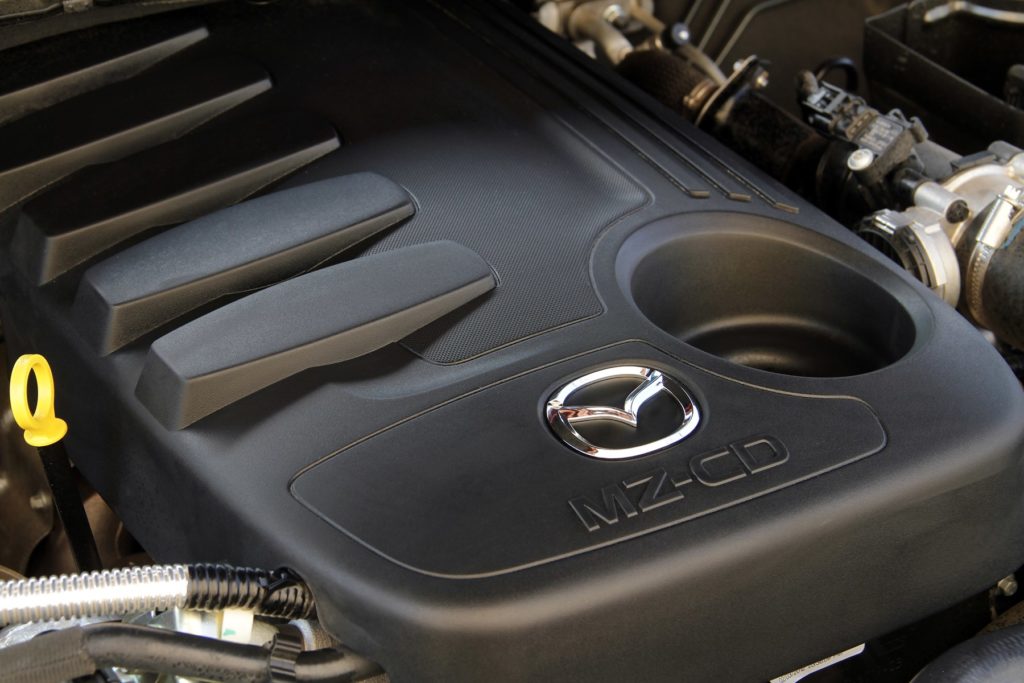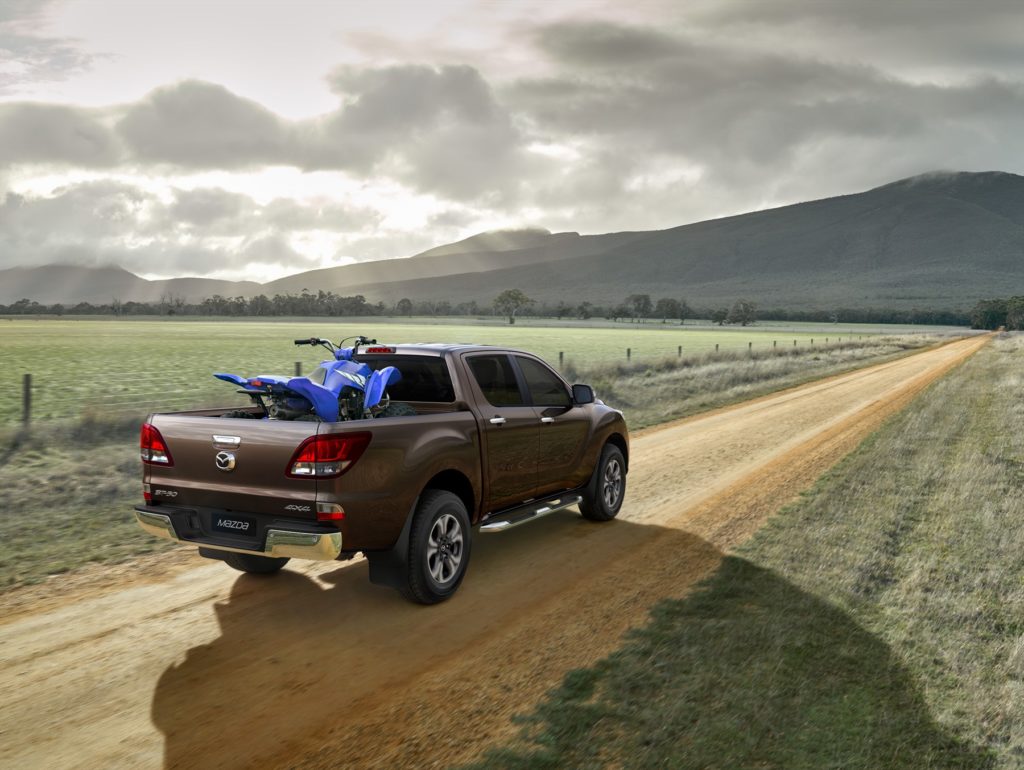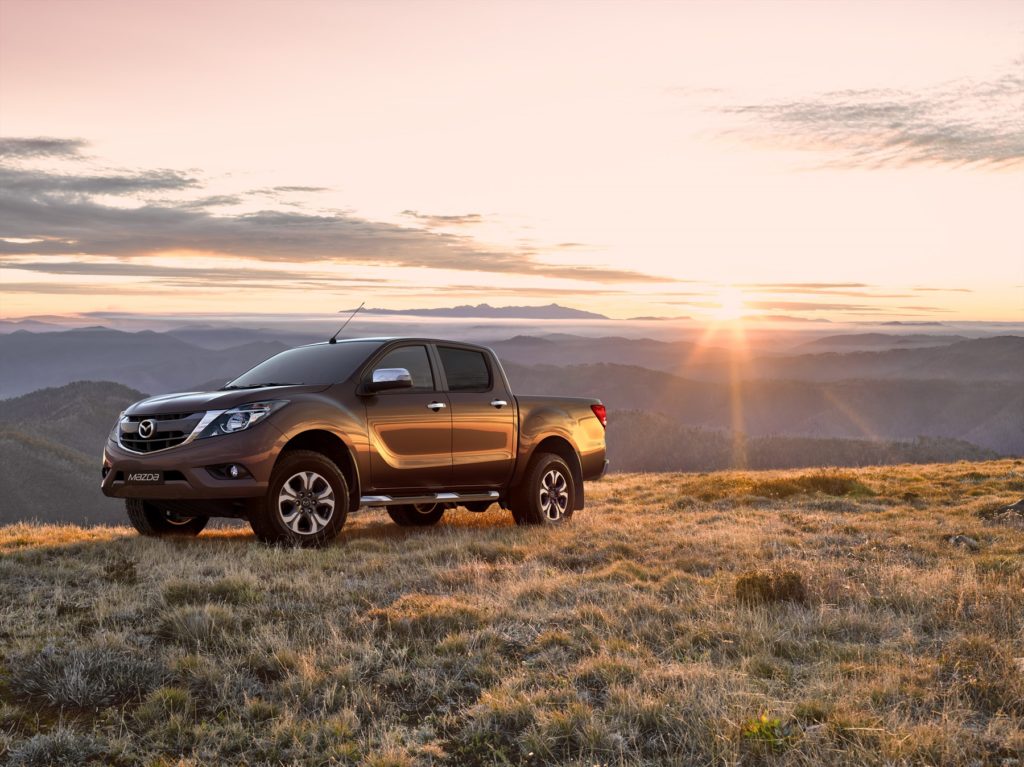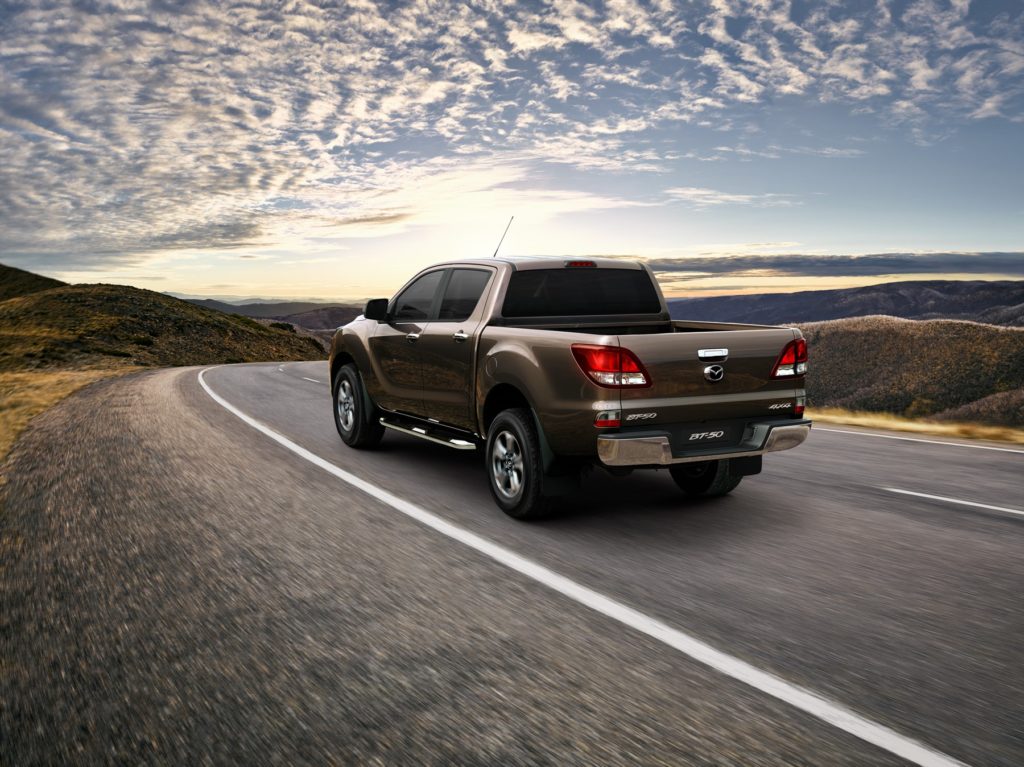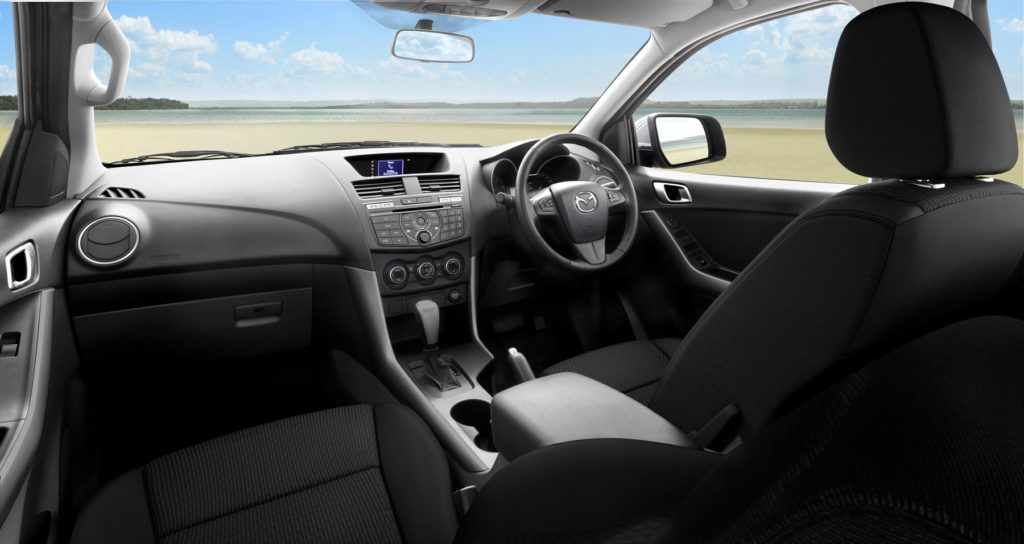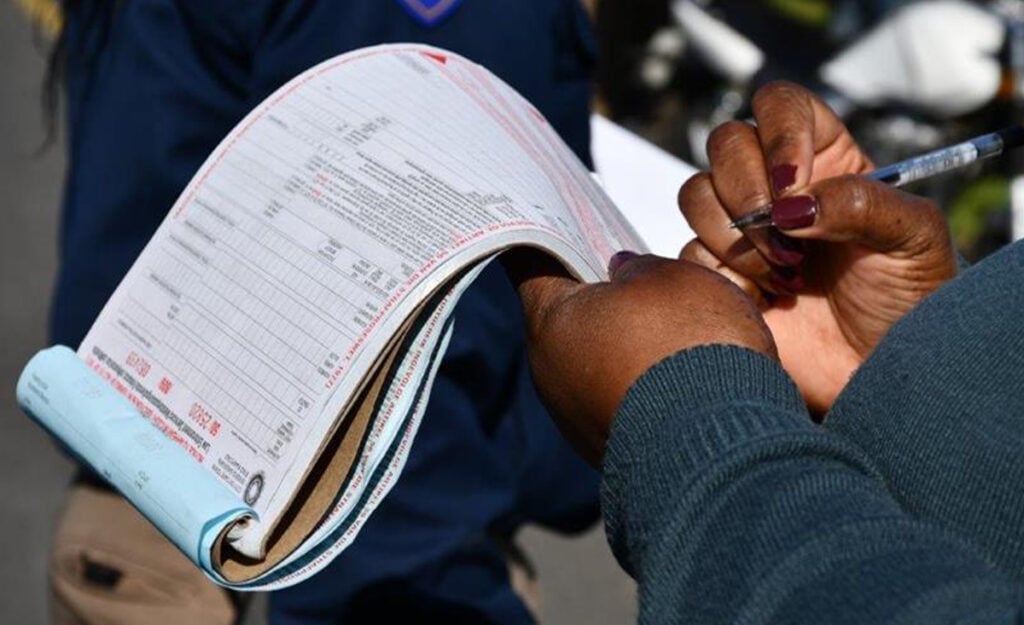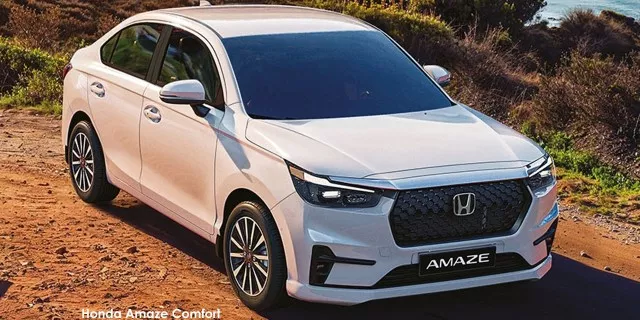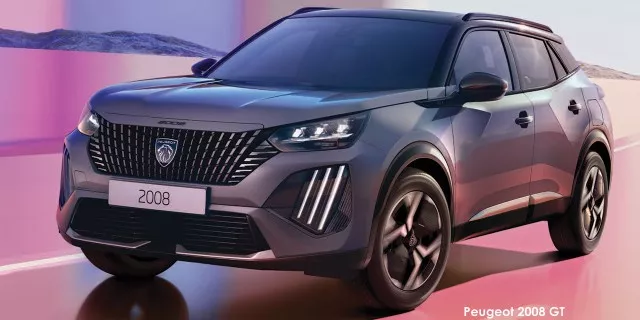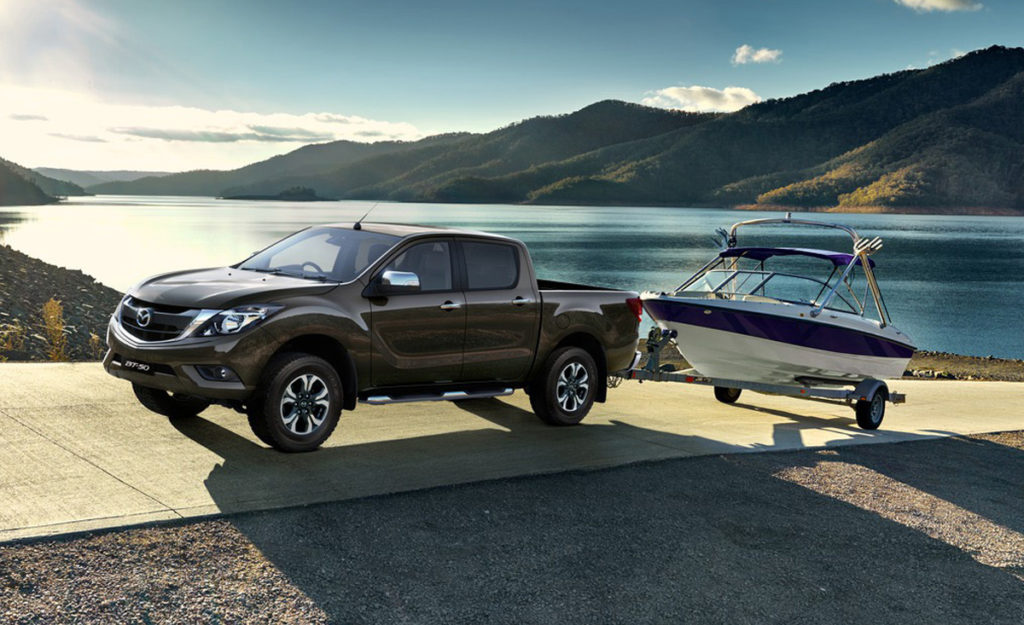
The Mazda BT-50 was originally a joint development between Ford and Mazda, which saw the BT-50 and Ranger share many elements.
It’s now been nine years since its release, and the Ranger has undergone several updates and refreshes – and offers over 30 trim levels to choose from.
The BT-50, on the other hand, still looks quite similar to its launch model and only six variants are available locally.
However, it has one major draw card: its price.
Looks
The biggest hurdle for the BT-50, I would say, has always been its looks.
It’s not the most attractive vehicle that has come out of Mazda’s stable, and faces stiff competition from the Hilux, Ranger, Amarok, and more.
The front end is typical of the brand, and it has a V-shaped design that sees the grille forming a smile and connecting to the sculpted headlights that resembles eyes.
At the top-end of the range, the front bumper and exterior bits are colour coded – and 17-inch alloys are installed as standard.
Chrome detailing, front fog lights, rain-sensing wipers, and automatic headlights are then added to round up the styling.
Unfortunately, there are no LED lamps or daytime running lights in the range.
Moving inside, there are signs that the BT-50 has been left behind by its competitors.
No huge displays or smartphone mirroring features will be found here, and no seat heating is available for those cold winter days.
It still has what every vehicle should have, though, and you would be hard pressed to find something serious to complain about other than the slightly “old fashioned” cabin design.
The seats, multifunction steering wheel, gear knob, and handbrake lever are dressed in leather, and a Bluetooth-capable radio system is fitted that accepts USB and aux inputs.
This plays through a six-speaker sound system.
An automatic dual-zone climate control system is also fitted, along with all-round electric windows and mirrors.
Additionally, the driver’s seat is 8-way electrically adjustable with accompanying lumbar support, and cruise control takes some load off during those long highway trips.
Safety features
One element that has stayed up to date in the BT-50 is the safety system.
Mazda have made sure their bakkies are as safe as possible by fitting the newest-generation of safety gear available.
The standard fitment of ABS, multiple airbags, auto door lock, and rear parking sensors with a reverse camera takes care of active safety.
Passive safety is then derived from:
- Hill launch assist
- Roll-over mitigation
- Driver attention alert
- Load adaptive control
- Trailer sway mitigation
- Emergency brake assist
- Brake force distribution
Performance
Bolted on to the chassis of the BT-50 is a 3.2-litre turbo-diesel motor that produces a healthy 147kW of power and 470Nm of torque.
This puts the Mazda’s performance specs high up in the bakkie rankings of South Africa.
The engine is mated to a 6-speed automatic transmission which sends power to all four wheels.
This allows the BT-50 a factory-limited top speed of 175km/h, and a claimed combined fuel consumption of 9.7l/100km.
When it comes to capabilities, this Mazda once again makes up for its outdated looks.
A segment-leading water wading depth of 800mm, along with a minimum ground clearance of 237mm, makes the BT-50 nimble across all terrains.
Meanwhile, a maximum towing capacity of 3,500kg and a half-metre-deep load box provides more than enough practicality.
At its maximum, the BT-50 stands at 1,821mm high, 5,365mm long, and 1,850mm wide; and it has a gross vehicle mass of 3,200kg.
Price
The biggest advantage that the Mazda BT-50 has over the rest of the market is its price.
At the bottom end, there is the BT-50 2.2l DE SLX 4×2 that has a starting price of R509,000.
The range-topping BT-50 3.2 DE SLE 4×4 Automatic has a price of R641,100.
The line-up’s starting price might be a bit higher than its competitors, but the top end offers a much more compelling package at a better price than most.
With every purchase you also receive a 5-year/unlimited kilometre warranty, and a 3-year/unlimited kilometre service plan with roadside assistance.
It is worth noting that a new-generation BT-50 was announced for international markets in June 2020, but there has not been any confirmation of a South African release.
